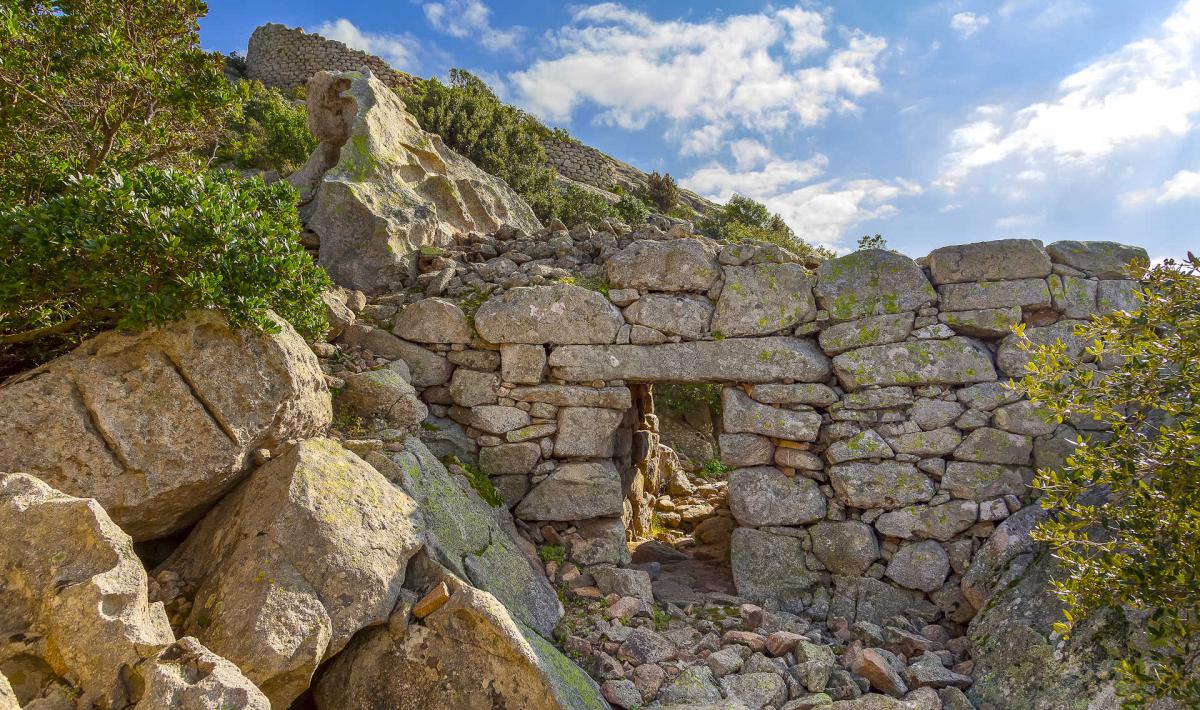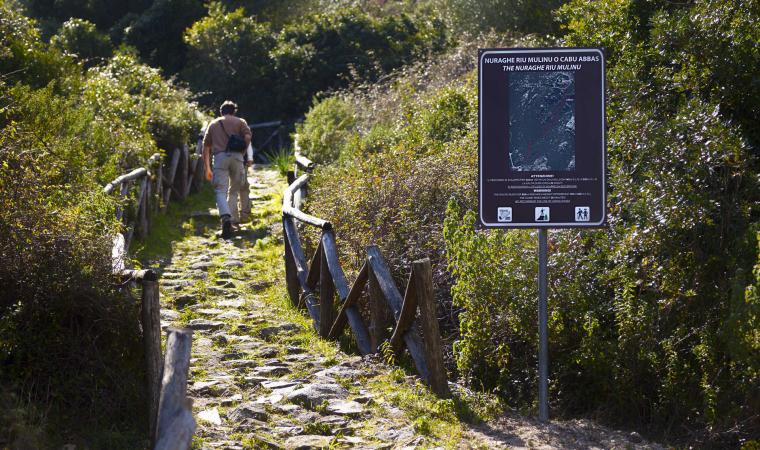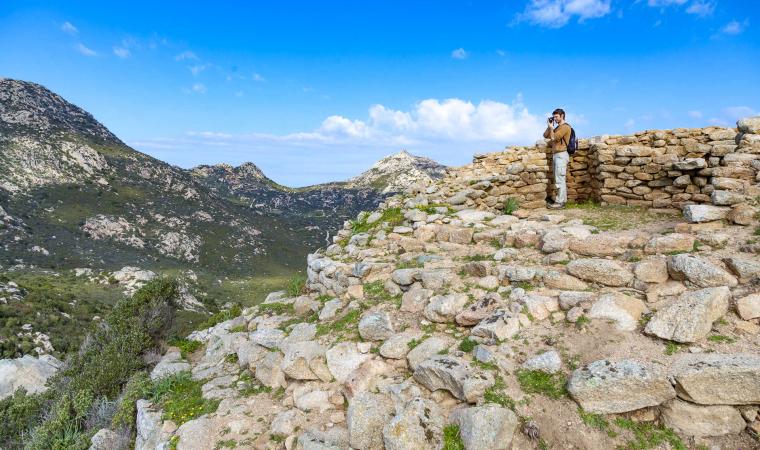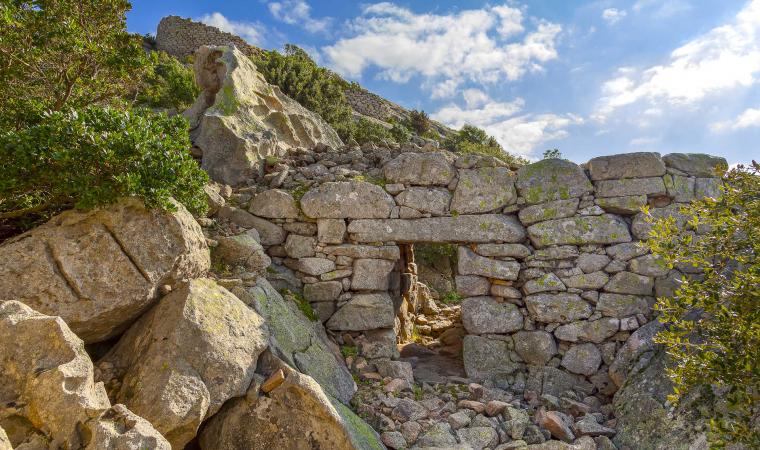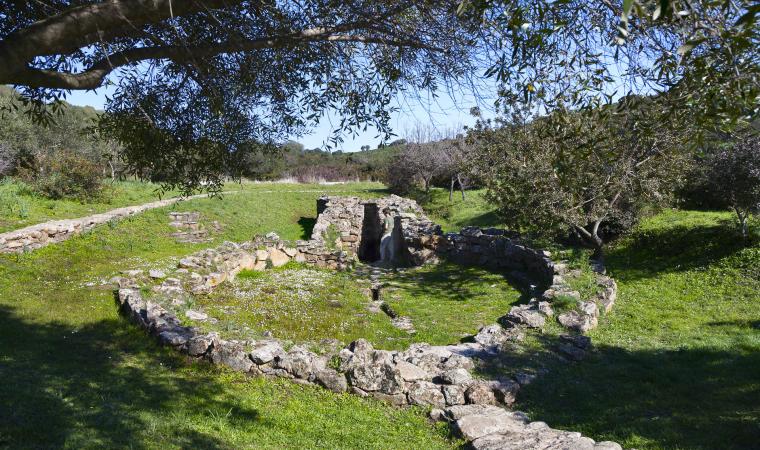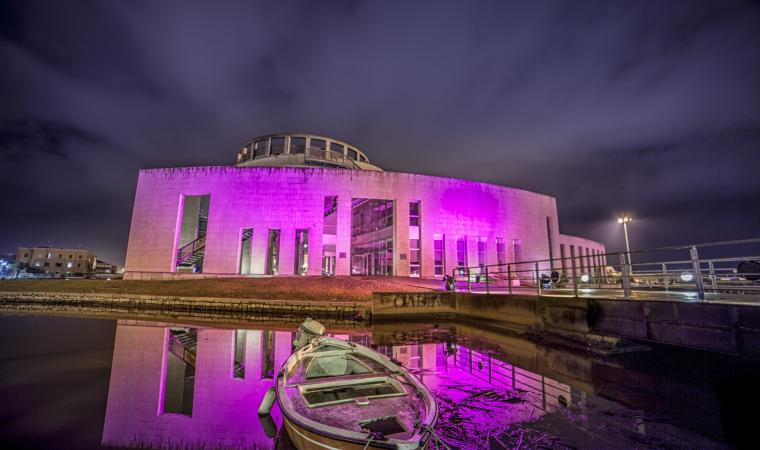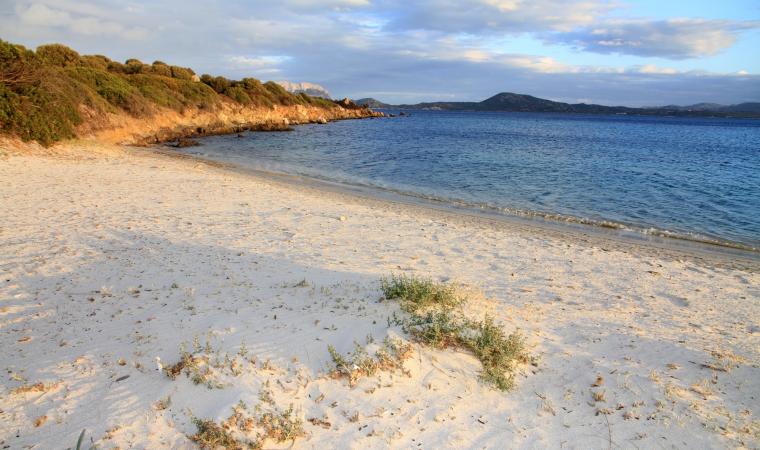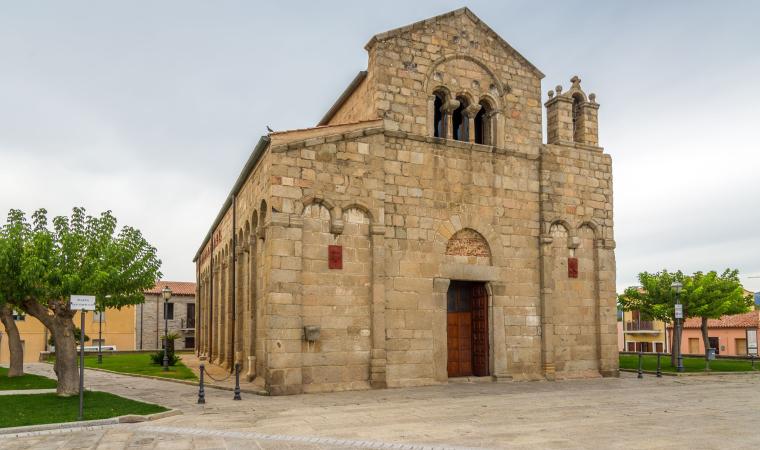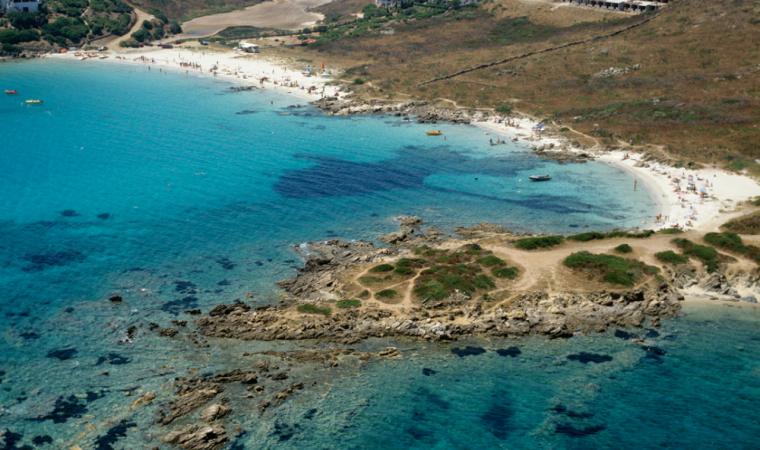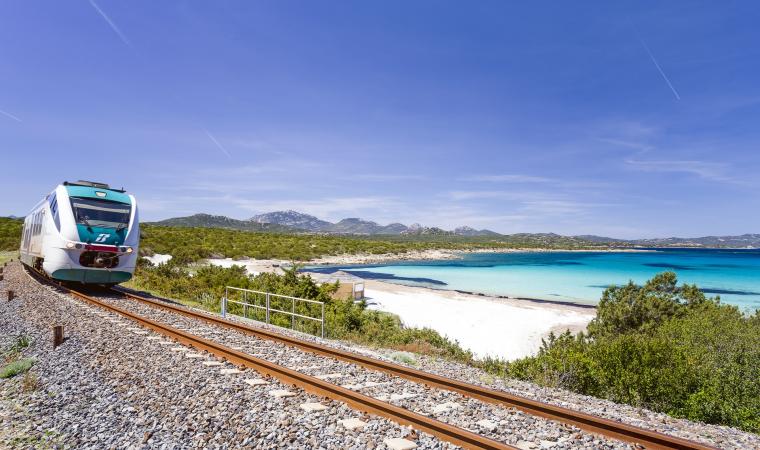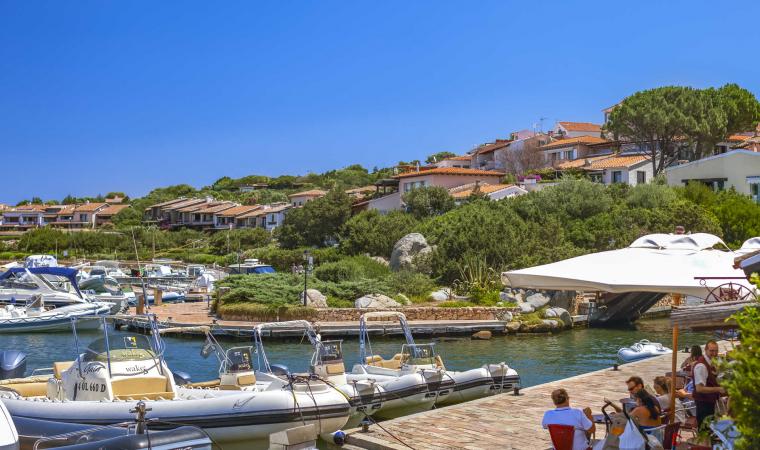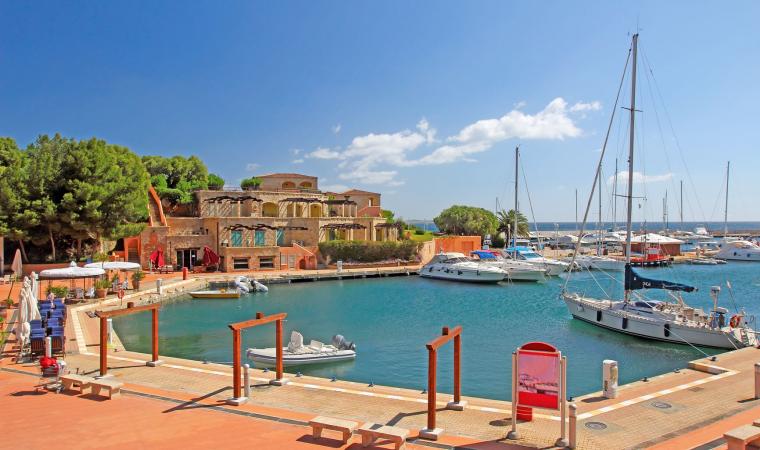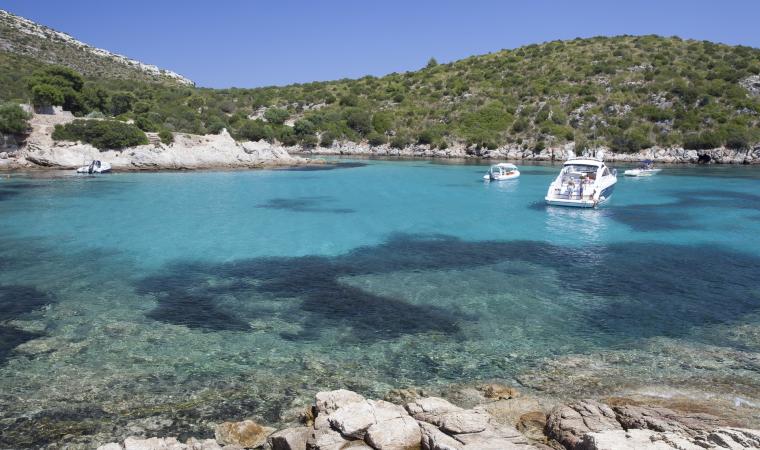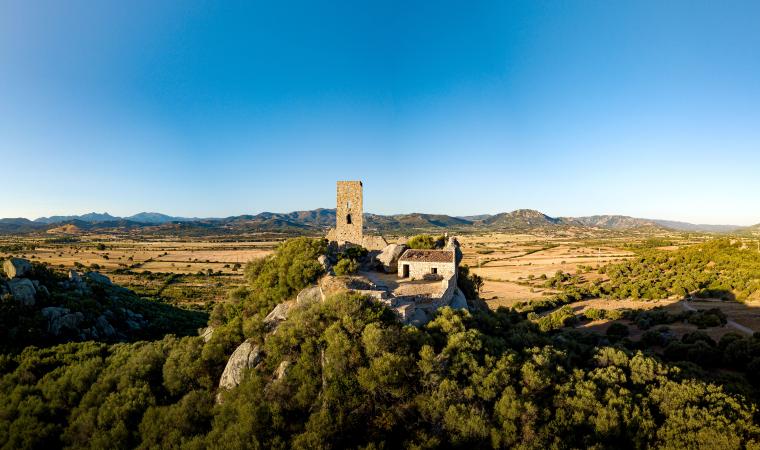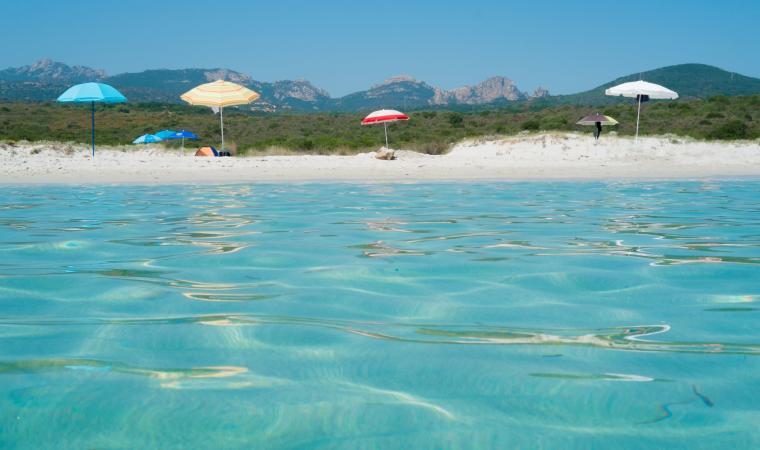From its almost 250 metres high strategic outlook on Cabu Abbas, it kept watch for enemy ships, its view over the horizon stretching all the way to Tavolara island. The Riu Mulinu nuraghe is one of the best known Nuragic fortifications in the northern part of the island. It rises just a few kilometres from Olbia and dates to 1300-1200 BCE. The main tower is well protected by a great 220 metre long wall that encircles the hilltop with widths and heights of up to five metres at some places. What distinguishes this wall is that it envelopes rocky outcrops along its perimeter. There are two entrances, a southern and a northern. Inside is a circular tower with a diameter of about eight metres.
Constructed with blocks of granite, the nuraghe has a corridor with small niche and stairs that once led to an upper level, no longer open. The area below the stairs leads to a sacrificial pit where burned bone fragments and ceramic bits were uncovered. Archaeologists began digging here in 1936 and have found a small bronze statuette of a woman with an amphora on her head. This important find allowed scientists to date the site and declare it one where sacred rites of water worship were performed.
Riu Mulinu is Olbia’s most important Nuragic site, but there are two other important monuments from the 2nd millennium BCE: the sacred sa Testa well, another shrine of water worship just outside of town, and the Giant Tomb of su Monte de s’Aba (or de s’Ape), unusual because it served as a common grave where the dead were buried together. Olbia (which means “happy” in Greek) was first settled by Phoenicians and Greeks and then came under the Romans, who, among other things, built an aqueduct, thermal baths and a s’Imbalconadu, a typical Roman farm. To complete your tour of the history of the city, continue your journey through the eras at the Archaeological museum located on the small island of Peddone inside the museo della necropoli under the beautiful Basilica of San Simplicio, the city’s patron saint.

